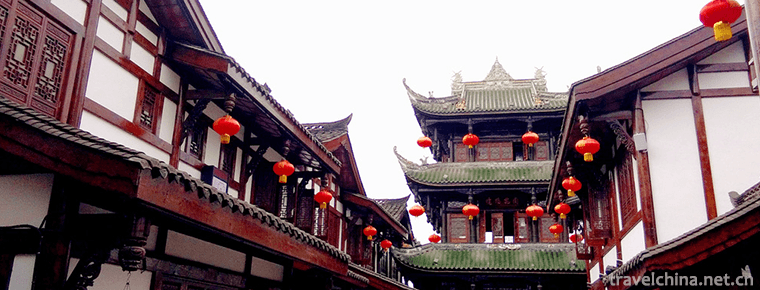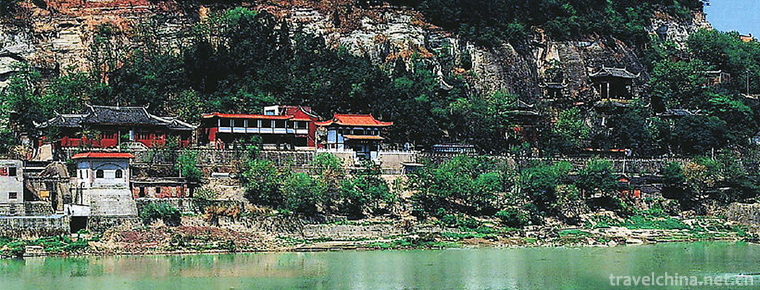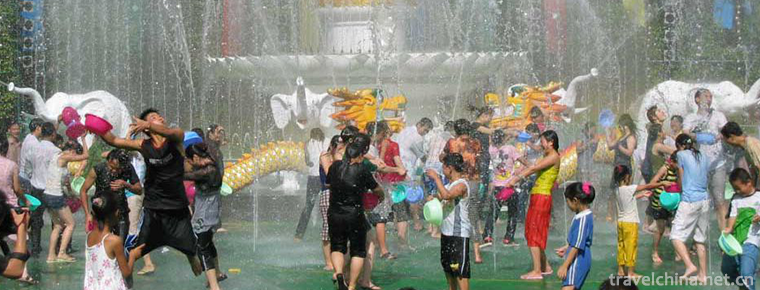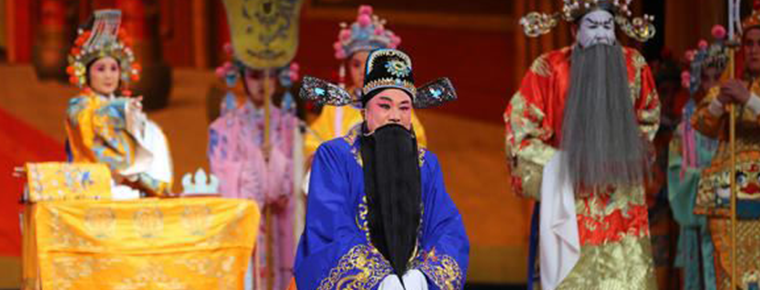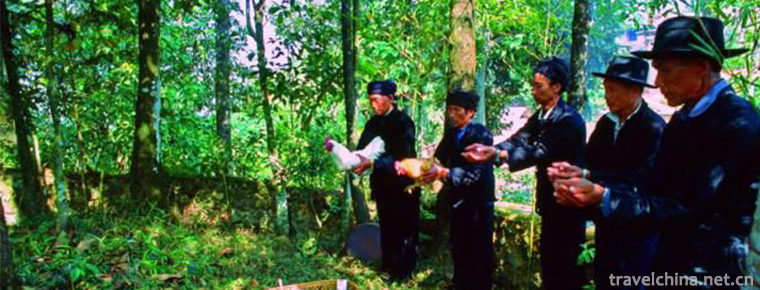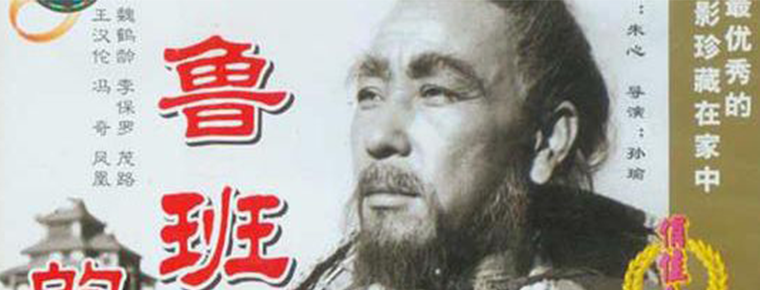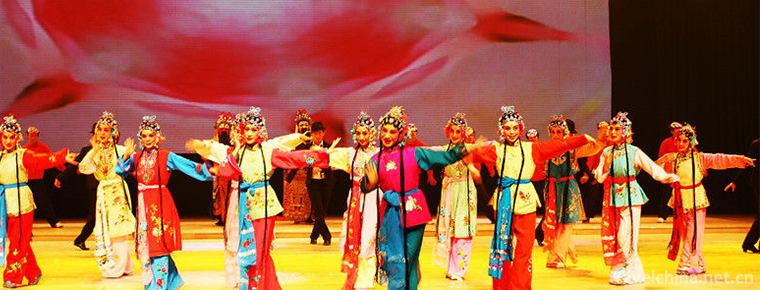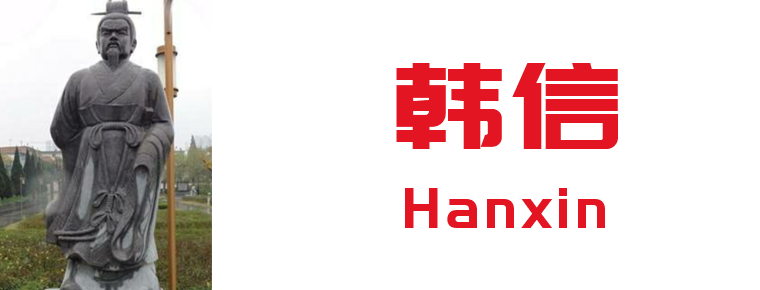Traditional Cotton Textile Techniques
Traditional Cotton Textile Techniques
Chinese traditional textile technology has a long history. Since cotton was introduced from India in the 7th century, Chinese textile industry has changed from linen to cotton. By the Yuan Dynasty, under the influence of Huang Daopo's textile technology reform, the textile industry in Weixian County and Feixiang County of Hebei Province had gradually developed and flourished, and clothes made of indigenous cloth had become the necessities of people's life.
On June 7, 2008, the traditional cotton textile technology was approved by the State Council and listed in the second batch of national intangible cultural heritage list.
protective measures
Xinhua Hainan Channel, June 11 (Yi Jie Pan Daqiang) June 11-14, "Baoting County intangible cultural heritage traditional skills tour exhibition" was held in the Penang Valley Li Miao Cultural Tourism Area of Baoting Li and Miao Autonomous County, Hainan Province. During the event, Hainan local residents can play betel nut valley with their ID card and only need to buy a 35 yuan sightseeing ticket (excluding the participants).
On the tour exhibition, the Areca Valley scenic spot displayed "Li traditional spinning, dyeing, weaving and embroidery skills", "Li bamboo and wood instrument music", "Li drilling and fire skills", "bark cloth production skills" and so on, which received the support and praise of tourists.
According to Chen Yunxin, deputy director of Baoting County Cultural and Sports Bureau and director of the county non-heritage center, Penang Valley scenic spot is the leading force for the protection and inheritance of Li-Miao culture. The non-heritage tour exhibition held here can let more tourists understand Hainan's local ethnic culture and promote the exchange of minority cultures and local cultures.
It is understood that since its establishment, the Betelnut Valley Scenic Area has been committed to digging deeply, protecting fully and vigorously promoting the traditional culture of the aborigines. Its non-relics exhibition hall, hemp spinning hall, cotton spinning hall, dragon quilt hall and other major cultural theme halls have the most complete and precious cultural relics in Hainan Island. As the base of material and cultural heritage protection in Hainan and South Africa, the Penang Valley scenic spot will show visitors "non-legacy charm" on the annual "Cultural Heritage Day".
Inheritance significance
The data show that the three-year cotton temporary storage policy has made China control about half of the world cotton reserves and become the price lever affecting the world cotton market.
The analysis meeting revealed that after the state cancelled the cotton temporary storage and began to implement the cotton dump price of 17250 yuan/ton, the cotton market price was then accelerated to decline on the basis of the dump price. The spot price of third-class cotton has fallen to about 17,000 yuan/ton. Affected by it, international cotton prices also fell, such as the price of American cotton in the domestic market of 16500 yuan/ton, basically the same as domestic cotton prices.
Affected by the futures market, the price of new cotton market may continue to fall to about 15,000 yuan/ton or even lower, which is good for the cotton textile industry to reduce costs, enhance the competitiveness of textile enterprises and promote textile export, according to the relevant person in charge of Agricultural Development Bank Henan Branch.
The cotton textile industry is experiencing the most difficult situation in 20 years.
In the first three quarters, the profits of the cotton textile industry in the province fell by more than 14% year on year. Since 2008, the cotton planting area in the province has decreased by 2.7 million mu, and the cotton field has shrunk by 1/3.
Over the same period, Zhijiang Omei Medical Products Co., Ltd. exported 171 million US dollars, an increase of 8.6%.
Where is the path of transformation and upgrading of cotton textile industry? Reporters went to Ogilvy and America for a visit.
Rebound Pipa, External Demand Forces Industrial Chain to Stretch Upstream
After the operation, the gauze was left in the patient's body. What is the consequence?
"This is a serious medical accident. In the United States, hospitals can go bankrupt directly." Cui Jinhai, chairman of Zhijiang Omei, said.
How to be sure?
Dip the hair off the clothes, wash and disinfect the hands, put on shoes, hats, wear anti-static clothes, and then through the air shower room, the reporter finally entered Ogilvy's chip gauze surgical towel production workshop.
In the workshop, workers are sewing button-sized green chips into pieces of medical gauze. On the detection line, the "buzzing" sounds continuously to ensure that each chip surgical towel count is sensitive and effective.
"As soon as the instrument is swept, how many pieces of gauze go into and out of the operating room, and at a glance, it will be clear to put an end to the loss." Cui Jinhai said that the price of chip surgical towel is more than twice as high as that of ordinary surgical towel, and all of them are exported to the United States and the European Union.
Cotton textile industry is full of sorrow, and Ogilvy and Mexico how to advance against the trend?
"We started from Shenzhen as a foreign trade company. Our products are purchased domestically and sold to the international market." Cui Jinhai introduced that in 1997, Shenzhen Omei entered the industry, purchased Zhijiang Underwear Factory, and transferred all cotton medical textiles for export.
The large market of foreign demand will boost the industrial chain. Omeiza has invested in the establishment of bleaching, spinning, weaving, medical dressing, terminal product disinfection production lines, creating a complete industrial chain, increasing added value. Nowadays, Zhijiang Omei has become the leading exporter of medical textiles in China, with annual export volume exceeding 280 million US dollars.
Development status
On March 10-12, the Coordination Research Group of China Cotton Bank conducted a survey in Zouping, Gaoqing and Guangrao. Through field visits to enterprises and exchanges with relevant local departments, it was found that under the background of the current slowdown in economic growth, the operation of cotton textile enterprises is still more difficult, but with the cotton direct subsidy policy and the implementation of Shandong's "high levy and low buckle" reform, the enterprises saw the cotton textile industry. Hope.
Enterprises seek to change and stabilize production by tapping potential, strengthening management, improving product quality and upgrading grade, and actively adjusting product structure. A small number of enterprises are on the verge of being eliminated and merged because of their poor operation in other industries. It is also recognized that cotton textile enterprises need to be cautious when they are involved in other industries. They should not blindly follow the trend through full investigation so as to avoid irreparable losses to enterprises.
"To give full play to the superiority of Xinjiang's high-quality cotton base, stabilize the national cotton market and promote local economic and social development, it is necessary for the state to play a combined boxing." Liu Xinqi, deputy to the Third Session of the Twelfth National People's Congress, said.
Liu Xinqi introduced that Xinjiang, as a national high-quality cotton production base and an important cotton textile industry base, has played an important role in guaranteeing national cotton security, promoting cotton farmers'income and maintaining social stability, but Xinjiang cotton production and sales are facing difficulties.
"Sales prices have fallen, the target price of cotton in 2014 is lower than the temporary storage price of 600 yuan/ton in 2013, and the average annual income of corps workers has decreased by about 3800 yuan. Next, Xinjiang cotton faces the predicament of weak local digestibility and low enthusiasm of state-owned enterprises to buy domestic cotton." Liu Xinqi said.
Liu Xinqi suggested that Xinjiang should give full play to the advantages of high-quality cotton base, stabilize cotton production, and accumulate experience for the country to improve the price formation mechanism of agricultural products (000061, stock bars). In terms of price stabilization, the target price level for 2014 will be maintained unchanged, and the qualified cotton output of non-agricultural land will be included in the scope of subsidies to ensure the income of cotton farmers.
Skill inheritance
Reporters learned from the Provincial Bureau of Cultural Relics that the Bureau's designated poverty alleviation unit, Shicheng Town, Pingshun County, "Taihang Three Villages Eco-Museum-Doucou Cognition Center", has been officially listed and opened after nearly three years of planning and construction, and has become the first eco-museum in the Han minority areas of northern China and the first in Shanxi Province.
The transportation and natural environment of Shicheng Town in Pingshun County are relatively closed, forming folk customs and local buildings with strong local characteristics, especially the geographically connected villages of Doukou, Baiyangpo and Yuejiazhai. Among them, "Taihang Sky Village" Yuejiazhai Village has formed the Shiju village landscape with strong ornamental and easy to protect and utilize; Baiyangpo Village has three provincial intangible cultural heritages such as "traditional cotton textile skills"; Doukou Village has a large number of cultural relics and high value, and the original pattern and original style of the village are well preserved; three villages are on the landscape surface. Each has its own features in appearance and relies on each other in geographic space.
The Sancun Museum of Shengtai Hang is a new form of "living museum" which combines the ecological landscape of mountainous areas and the humanistic landscape with the theme of mountain culture as a whole and without walls. Its core meaning is to protect the cultural heritage and the related ecological environment as a whole, authentically and vividly, and to make it continue and sustainable development.
Since 2012, Shanxi Provincial Bureau of Cultural Relics has organized experts'field visits for many times, and has decided to plan the three villages as ecological museums in northern Han nationality areas. It has invested more than 1.6 million yuan in special funds to support the project, directed Pingshun County Committee and county government to set up local expert working groups, initiated the preparation of ecological museums, and completed the planning of ecological museums. Site selection, exhibition scheme design, exhibition materials collection, exhibition room renovation, interior decoration and exhibition layout project of the system and cognition center.
Doukou Cognitive Center is one of the cognitive centers of Taihang Sancun Eco-Museum. It was rebuilt from a three-storey loft-style people's hall built in 1950s. Its building area is 450.82 square meters and its exhibition area is 363.97 square meters.
The author learned from the Shaya County Bureau of Culture and Sports that among the representative successors of the fourth batch of state-level intangible cultural heritage projects announced recently, Xinjiang Uygur Autonomous Region has 17 people, of whom Aksu area accounts for 5.
It is understood that the Ministry of Culture, in accordance with the relevant provisions of the Law of the People's Republic of China on Non-material Cultural Heritage and the Interim Measures for the Recognition and Management of Representative Inheritors of National Non-material Cultural Heritage Projects, has formally carried out inheritance and dissemination activities for the effective protection and inheritance of national non-material cultural heritage projects and encouraged and supported the representative inheritors of national non-material cultural heritage projects. 498 representative successors of the fourth batch of national intangible cultural heritage projects were announced, 17 of them were listed in Xinjiang Uygur Autonomous Region, including 5 in Aksu area, namely Nasr Nussel, successor of Sainem (Kuqa Sainem), successor of traditional cotton textile technology (Uygur Palazi textile technology), successor of Paletam Turdi, and national musical instrument production technology (Uygur Uygur). Aiti Yiming, the inheritor of Er nationality's musical instrument making skills, Ablez Tulson, Ali Ibrayin, the inheritor of wool textile and rolling techniques (Uygur flower felt making skills), and Maxi Refu, the inheritor of Xinjiang Uygur nationality (Uygur but Kumu Maxi Refu).
The author understands that up to now, Aksu region has six representative inheritors of national intangible cultural heritage projects, in addition to the above five, there are Uygur Karakul Lamb Leather cap production technology inheritor Yushan Maimaiti (Shaya County), which is also the first representative inheritor of Aksu region to be included in the national intangible cultural heritage project.
Shaya County Bureau of Culture and Sports Director Amina said that the representative inheritors are important carriers and transmitters of intangible cultural heritage, are masters of the intangible cultural heritage of rich knowledge and exquisite skills, is the representative of the living inheritance. Relevant departments should actively encourage and support the representative inheritors of national intangible cultural heritage projects to carry out inheritance and dissemination activities, earnestly do a good job in the protection of intangible cultural heritage, and strive to make greater contributions to inheriting and carrying forward the excellent traditional culture of the Chinese nation and promoting the great development and prosperity of socialist culture.
"One person in Shaya County is now listed as the representative successor of the national intangible cultural heritage project, five as the representative successor of the autonomous region-level intangible cultural heritage project. Governments at all levels also give economic support to the successors, including 10,000 yuan per person per year at the national level and 3600 yuan per person per year at the provincial level." Shaya County Television Station Zhang Delei told the author.
On the 28th, Weixian County of Hebei Province held a traditional cotton textile technology competition of intangible cultural heritage. Ten spinning teams and 20 weaving teams all came to the countryside.
According to Hu Jianying, Standing Committee of Weixian County Committee and Minister of Propaganda, the traditional cotton textile technology in Weixian County was listed as a national intangible cultural heritage in June 2008. In order to inherit this precious intangible cultural heritage, let more people know its skills and further enrich and activate the cultural life of the people in the county, this event was held in particular.
After an hour of competition, according to the weight and quality of the yarn, the length, precision and evenness of the fabric, two first-class prizes (spinning 1, weaving 1), five second-class prizes (spinning 2, weaving 3), and eight third-class prizes (spinning 2, weaving 6) were awarded with certificates of honor and material awards.

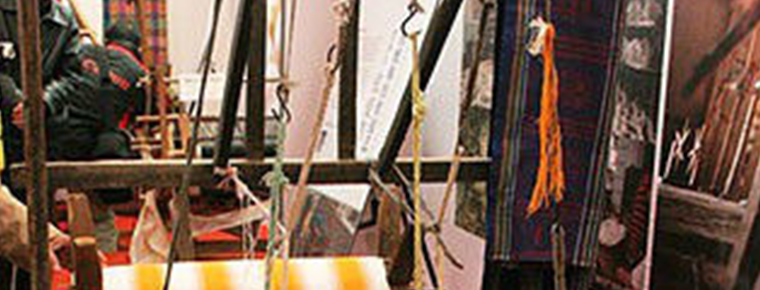
-
The AncientCity of Lang Zhong
Langzhong Ancient City is a national AAAAA-level tourist attraction, a thousand-year-old county, the hometown of Chinese Spring Festival culture, one of the four ancient cities in China..
Views: 166 Time 2018-12-12 -
Huangze Temple
Huangze Temple is the only sacrificial temple for Empress Wu Zetian in China. It is located on the West Jialing River in Guangyuan City, Sichuan Province. In 1961, it was announced .
Views: 148 Time 2019-01-18 -
Water splashing Festival
Dai Water-Splashing Festival is also called "Bath Buddha Festival". Dai language is called "Sangkangbimai" (meaning "New Year"). Dai people in Xishuangbanna Dai Autonomou.
Views: 421 Time 2019-04-24 -
Diabolo
Diabolo is a splendid flower in Chinese traditional culture garden. Diabolo used to be called "Hu Dao", also known as "ground bell", "empty bell", "wind gourd"..
Views: 133 Time 2019-04-28 -
Huai Bang
Huai Bang (also known as Huai Diao, commonly known as Huai Qing Bangzi, Lao Huai Bang, Xiao Bang Opera and Xiao Ban Opera), is one of the traditional local operas in Henan Province and one of the nati.
Views: 93 Time 2019-05-04 -
Sacrifice forest
Sacrifice to the gods of villages, as well as "Amaron" and "Pumatu" and other names, is a traditional festival of the Hani people, which takes villages as units and integrates reli.
Views: 143 Time 2019-05-05 -
Legend of Luban
productivity and the change of production tools have created conditions for the improvement of technology..
Views: 238 Time 2019-05-15 -
Western Fujian drama
Western Fujian Han Opera, formerly known as "Waijiang Opera", also known as "Ran Tan", is one of the local operas in Fujian. He was born out of foreign operas, absorbed Hakka diale.
Views: 205 Time 2019-06-05 -
Beijing Forestry University
Beijing Forestry University is a national key university directly under the Ministry of Education and jointly established by the Ministry of Education and the State Forestry and Grassland Administrati.
Views: 221 Time 2019-09-06 -
Han Xin
Han Xin (about 231 - the first 196). The Warring States period Han Xiang Wang Ji Kun Shu sun, in order to avoid the military strategist with the same name, Huaiyin Hou Hanxin Mixed up, historical book.
Views: 162 Time 2019-09-07 -
Baoguang Temple
Baoguang temple is located in Xindu District, Chengdu City, Sichuan Province, China. It is one of the Buddhist temples with a long history, large scale, complete structure and quiet environment..
Views: 114 Time 2020-11-05 -
Leshan social security
By the end of 2018, there were 652700 employees participating in the basic endowment insurance for enterprise employees in Leshan, an increase of 27000 over the end of the previous year. 1.2567 million people participated in the endowment insurance for urban .
Views: 325 Time 2020-12-17
